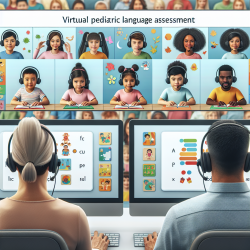The COVID-19 pandemic has undeniably altered the landscape of school-based therapy services. A recent study titled Perceptions of School-Based Telehealth in a Rural State: Moving Forward After COVID-19 offers valuable insights into the barriers and opportunities faced by practitioners during this transition. The study's findings are essential for practitioners aiming to improve their telehealth services.
The study identified three primary barriers to the implementation of telehealth:
- Practitioner Training: 49% of respondents indicated a need for more training to effectively deliver telehealth services.
- Student Technology Needs: 45% highlighted the lack of access to necessary technology for students as a significant barrier.
- Quality Concerns: 40% were concerned that telehealth might not be equivalent to in-person services.
These barriers, however, can be addressed through targeted strategies:
1. Enhancing Practitioner Training
Training is crucial for practitioners to feel confident and competent in delivering telehealth services. The study emphasizes the need for educational programs that cover technical skills, digital literacy, online privacy, and therapeutic skills in a digital context. Implementing comprehensive training modules can significantly improve practitioners' readiness and efficacy in telehealth.
2. Addressing Technology Gaps
Ensuring that students have access to the necessary technology is fundamental. Schools and districts can seek funding and partnerships to provide devices and reliable internet access to students. This will bridge the digital divide and enable equitable access to telehealth services.
3. Ensuring Quality of Services
Quality concerns can be mitigated by educating practitioners on the effectiveness of telehealth. The study and existing literature support the efficacy of telehealth in achieving positive outcomes. Continuous monitoring and evaluation can help ensure that telehealth services meet the same standards as in-person interventions.
For practitioners looking to delve deeper into the findings and implications of this study, the full research paper provides a comprehensive analysis. Understanding these insights can help practitioners enhance their telehealth services and contribute to better outcomes for children.
To read the original research paper, please follow this link: Perceptions of School-Based Telehealth in a Rural State: Moving Forward After COVID-19.










